Birds
Media
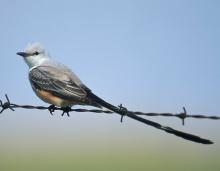
Species Types
Scientific Name
Tyrannus forficatus
Description
One of Missouri’s most breathtaking birds, the scissor-tailed flycatcher captures insects in midair, then flits back to its perch. You’re most likely to see it in summer, in our southwestern prairies.
Media
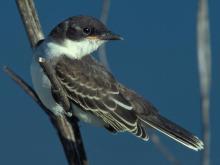
Species Types
Scientific Name
Tyrannus tyrannus
Description
The eastern kingbird’s spirited territorial defense, tidy, black-and-white plumage, and distinctive, fluttery flight have long captured the attention and admiration of people.
Media

Species Types
Scientific Name
Tringa melanoleuca
Description
One of the more common of about 35 shorebirds that migrate through Missouri, the greater yellowlegs is large, with a slightly upturned bill and long, bright yellow legs.
Media

Species Types
Scientific Name
Coccothraustes vespertinus
Description
Evening grosbeaks are sporadically present in Missouri — flocks sometimes wander here from the north during winter. When flocks appear at backyard birdfeeders, it creates a local sensation.
Media

Species Types
Scientific Name
Scolopax minor
Description
This remarkable bird is a short-necked, short-legged, terrestrial shorebird with a long bill. The eyes are set back on its head. When this bird is flushed, its short wings make a startling whirring sound.
Media
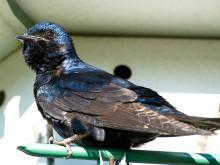
Species Types
Scientific Name
Progne subis
Description
Generations of Americans have greeted the annual return of purple martins, with their cheerful calls, graceful flight, and faithful reappearance each year. But martin populations have been declining. Find out what you can do to help these agile fliers.
Media

Species Types
Scientific Name
Anas strepera
Description
The male gadwall is a rather drab-looking duck with a black rear end and a white speculum (wing patch). This dabbling duck is a common migrant in Missouri.
Media

Species Types
Scientific Name
Aix sponsa
Description
The wood duck is one of the world's most beautiful waterfowl. It is equally famous for being a cavity nester in hollow trees, sometimes 60 feet above the ground and a mile away from water.
Media
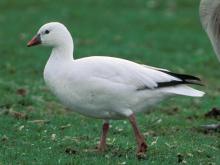
Species Types
Scientific Name
Chen rossii
Description
Ross’s goose looks a lot like the snow goose, but it is the size of a mallard, has a rounded head, stubby bill, and short neck, and lacks the black “lipstick” patch on the bill.
Media
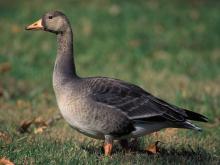
Species Types
Scientific Name
Anser albifrons
Description
Greater white-fronted geese are brown birds with dark streaks underneath and a pink bill and legs. Missourians usually see them during migration and in winter.
See Also







Media

Species Types
Scientific Name
Hemaris diffinis
Description
The snowberry clearwing is a moth that confuses people because it looks like a bumblebee and flies like a hummingbird!
Media

Species Types
Scientific Name
Hyles lineata
Description
The white-lined sphinx moth sometimes confuses people because it flies, hovers, and eats from flowers like a hummingbird. The adults often fly during daylight hours as well as in the night and are often found at lights.
Media

Species Types
Scientific Name
Darapsa myron
Description
The Virginia creeper sphinx moth is common in woods and brushy areas and comes to lights at night. The larvae eat Virginia creeper and grape leaves.
Media

Species Types
Scientific Name
Perimyotis subflavus (formerly Pipistrellus subflavus)
Description
Tri-colored bats, formerly called eastern pipistrelles, are relatively small and look pale yellowish or pale reddish brown. The main hairs are dark gray at the base, broadly banded with yellowish brown, and tipped with dark brown.
Media

Species Types
Scientific Name
Myotis grisescens
Description
Gray myotises are difficult to distinguish from other mouse-eared bats. A key identifying feature of the gray myotis is that its wing is attached to the ankle and not at the base of the toes. It’s an endangered species.
Media

Species Types
Scientific Name
Myotis lucifugus
Description
The little brown myotis (little brown bat) is one of our most common bats, but populations are declining. White-nose syndrome has taken a heavy toll in northeastern states. This species is now listed as vulnerable across its range.
Media

Species Types
Scientific Name
Myotis sodalis
Description
The Indiana myotis, or Indiana bat, summers along streams and rivers in north Missouri, raising its young under the bark of certain trees. It is an endangered species.
About Birds in Missouri
About 350 species of birds are likely to be seen in Missouri, though nearly 400 have been recorded within our borders. Most people know a bird when they see one — it has feathers, wings, and a bill. Birds are warm-blooded, and most species can fly. Many migrate hundreds or thousands of miles. Birds lay hard-shelled eggs (often in a nest), and the parents care for the young. Many communicate with songs and calls.





















